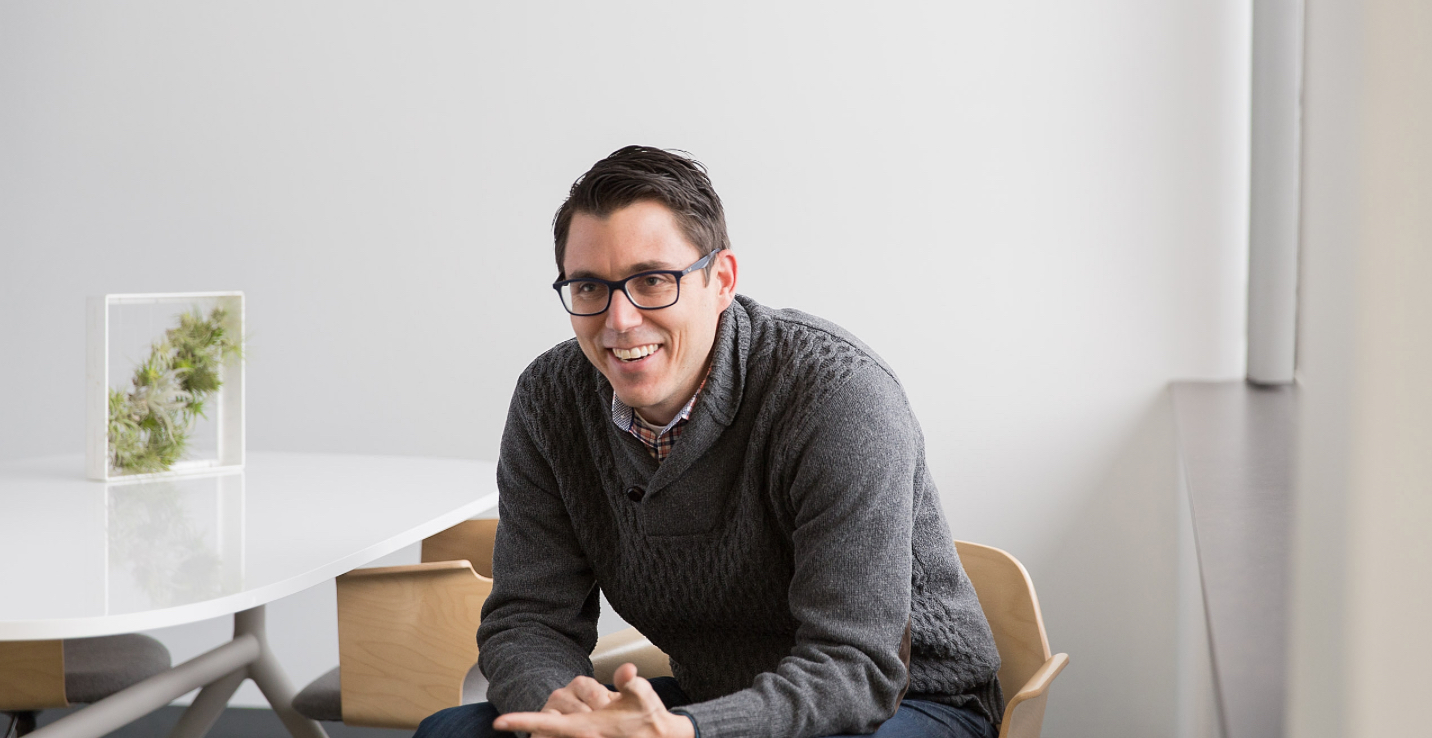Rivian’s CEO has explained why he and the company aren’t concerned about U.S. President Donald Trump’s electric vehicle (EV) policies, including the repeal of the $7,500 federal tax credit.
During a conversation with Automotive News at Rivian’s opening of a new Space showroom in San Francisco on Thursday, CEO RJ Scaringe said that the company plans to remain a top competitor pushing U.S. electrification, with or without the tax credit or similar battery production incentives. Scaringe highlighted that the credit would be repealed equally for all automakers under the Trump administration, noting that he didn’t start the electric vehicle (EV) maker even knowing what the future landscape for subsidies might look like.
“I don’t think we’re particularly worried about any of it because whatever happens will be equally applied to all,” Scaringe said during the opening event. “I started the company with the view of making highly compelling products and none of my decision to start Rivian had anything to do with what the policy was going to look like.”
However, the Rivian CEO did signal that legacy automakers could be more likely to fund combustion engine development when considering short-term profitability for the next two to three years, though he says this would be mistake for the industry long-term.
“I think in the end it’s sort of like there’s small speed bumps along the way and it’s on us to respond to whatever that environment is,” the CEO said. “We’re really talking about U.S. leadership in the future of technology as it pertains to transportation. This is not a political thing. It’s not like the left wants to move to electrification. It’s that the future of transportation will be electric.”
Rivian executive reveals massive cost-savings from re-tooling Illinois plant
READ MORE ON RIVIAN: Rivian CEO details ‘very intentional’ move he made to be different than Tesla
“The challenge with some of these short-term changes, for the world and for the U.S. leadership in technology, is that it will cause some manufacturers to invest less in electrification,” Scaringe notes. “And I think that’s probably good for Rivian from a competitive landscape, but bad for the world. If you’re optimizing purely for profitability in the next 2 to 3 years and you’re a traditional legacy manufacturer, you can see how you can very easily make a spreadsheet case of ‘Let’s double down on combustion or hybrids. I think that is a big miscalculation for the long term.”
The news also comes after Rivian gained a $6.6 billion commitment from the Department of Energy to help fund the construction of its upcoming factory in Georgia in November, officially closing on the loan on January 16. Amidst some speculation that the Trump administration could try to cancel the loan, Scaringe highlights that the agreement should already be set in stone, with the company subject to several conditions.
“We signed a legally binding agreement with the Department of Energy, to be clear,” Scaringe adds. “And, of course, that loan has a whole host of conditions that we negotiated over the last couple years.”
Rivian delivered 51,579 last year, marking a slight increase from 50,122 vehicles in 2023. The company also announced a major partnership and $5 billion investment deal with Volkswagen in June, and recent reports suggest that other manufacturers are also considering similar software supply deals with the EV company.
Meanwhile, Rivian and many other small EV makers are still attempting to turn production into profits, with the manufacturers still reporting substantial losses as they attempt to scale output. Many Tesla followers point out how close to bankruptcy the company came during its Model 3 ramp-up, and CEO Elon Musk has repeatedly echoed details about how difficult production is.
Similarly, however, Musk has also aired concerns about the potential for Rivian, Lucid and other growing EV makers to go bankrupt if they aren’t careful with their finances.
What are your thoughts? Let me know at zach@teslarati.com, find me on X at @zacharyvisconti, or send us tips at tips@teslarati.com.
Tesla rivals Rivian and Lucid receive harsh prediction from Elon Musk
Need accessories for your Tesla? Check out the Teslarati Marketplace:

News
Tesla FSD fleet is nearing 7 billion total miles, including 2.5 billion city miles
As can be seen on Tesla’s official FSD webpage, vehicles equipped with the system have now navigated over 6.99 billion miles.

Tesla’s Full Self-Driving (Supervised) fleet is closing in on almost 7 billion total miles driven, as per data posted by the company on its official FSD webpage.
These figures hint at the massive scale of data fueling Tesla’s rapid FSD improvements, which have been quite notable as of late.
FSD mileage milestones
As can be seen on Tesla’s official FSD webpage, vehicles equipped with the system have now navigated over 6.99 billion miles. Tesla owner and avid FSD tester Whole Mars Catalog also shared a screenshot indicating that from the nearly 7 billion miles traveled by the FSD fleet, more than 2.5 billion miles were driven inside cities.
City miles are particularly valuable for complex urban scenarios like unprotected turns, pedestrian interactions, and traffic lights. This is also the difference-maker for FSD, as only complex solutions, such as Waymo’s self-driving taxis, operate similarly on inner-city streets. And even then, incidents such as the San Francisco blackouts have proven challenging for sensor-rich vehicles like Waymos.
Tesla’s data edge
Tesla has a number of advantages in the autonomous vehicle sector, one of which is the size of its fleet and the number of vehicles training FSD on real-world roads. Tesla’s nearly 7 billion FSD miles then allow the company to roll out updates that make its vehicles behave like they are being driven by experienced drivers, even if they are operating on their own.
So notable are Tesla’s improvements to FSD that NVIDIA Director of Robotics Jim Fan, after experiencing FSD v14, noted that the system is the first AI that passes what he described as a “Physical Turing Test.”
“Despite knowing exactly how robot learning works, I still find it magical watching the steering wheel turn by itself. First it feels surreal, next it becomes routine. Then, like the smartphone, taking it away actively hurts. This is how humanity gets rewired and glued to god-like technologies,” Fan wrote in a post on X.
News
Tesla starts showing how FSD will change lives in Europe
Local officials tested the system on narrow country roads and were impressed by FSD’s smooth, human-like driving, with some calling the service a game-changer for everyday life in areas that are far from urban centers.

Tesla has launched Europe’s first public shuttle service using Full Self-Driving (Supervised) in the rural Eifelkreis Bitburg-Prüm region of Germany, demonstrating how the technology can restore independence and mobility for people who struggle with limited transport options.
Local officials tested the system on narrow country roads and were impressed by FSD’s smooth, human-like driving, with some calling the service a game-changer for everyday life in areas that are far from urban centers.
Officials see real impact on rural residents
Arzfeld Mayor Johannes Kuhl and District Administrator Andreas Kruppert personally tested the Tesla shuttle service. This allowed them to see just how well FSD navigated winding lanes and rural roads confidently. Kruppert said, “Autonomous driving sounds like science fiction to many, but we simply see here that it works totally well in rural regions too.” Kuhl, for his part, also noted that FSD “feels like a very experienced driver.”
The pilot complements the area’s “Citizen Bus” program, which provides on-demand rides for elderly residents who can no longer drive themselves. Tesla Europe shared a video of a demonstration of the service, highlighting how FSD gives people their freedom back, even in places where public transport is not as prevalent.
What the Ministry for Economic Affairs and Transport says
Rhineland-Palatinate’s Minister Daniela Schmitt supported the project, praising the collaboration that made this “first of its kind in Europe” possible. As per the ministry, the rural rollout for the service shows FSD’s potential beyond major cities, and it delivers tangible benefits like grocery runs, doctor visits, and social connections for isolated residents.
“Reliable and flexible mobility is especially vital in rural areas. With the launch of a shuttle service using self-driving vehicles (FSD supervised) by Tesla in the Eifelkreis Bitburg-Prüm, an innovative pilot project is now getting underway that complements local community bus services. It is the first project of its kind in Europe.
“The result is a real gain for rural mobility: greater accessibility, more flexibility and tangible benefits for everyday life. A strong signal for innovation, cooperation and future-oriented mobility beyond urban centers,” the ministry wrote in a LinkedIn post.
News
Tesla China quietly posts Robotaxi-related job listing
Tesla China is currently seeking a Low Voltage Electrical Engineer to work on circuit board design for the company’s autonomous vehicles.

Tesla has posted a new job listing in Shanghai explicitly tied to its Robotaxi program, fueling speculation that the company is preparing to launch its dedicated autonomous ride-hailing service in China.
As noted in the listing, Tesla China is currently seeking a Low Voltage Electrical Engineer to work on circuit board design for the company’s autonomous vehicles.
Robotaxi-specific role
The listing, which was shared on social media platform X by industry watcher @tslaming, suggested that Tesla China is looking to fill the role urgently. The job listing itself specifically mentions that the person hired for the role will be working on the Low Voltage Hardware team, which would design the circuit boards that would serve as the nervous system of the Robotaxi.
Key tasks for the role, as indicated in the job listing, include collaboration with PCB layout, firmware, mechanical, program management, and validation teams, among other responsibilities. The role is based in Shanghai.
China Robotaxi launch
China represents a massive potential market for robotaxis, with its dense urban centers and supportive policies in select cities. Tesla has limited permission to roll out FSD in the country, though despite this, its vehicles have been hailed as among the best in the market when it comes to autonomous features. So far, at least, it appears that China supports Tesla’s FSD and Robotaxi rollout.
This was hinted at in November, when Tesla brought the Cybercab to the 8th China International Import Expo (CIIE) in Shanghai, marking the first time that the autonomous two-seater was brought to the Asia-Pacific region. The vehicle, despite not having a release date in China, received a significant amount of interest among the event’s attendees.










